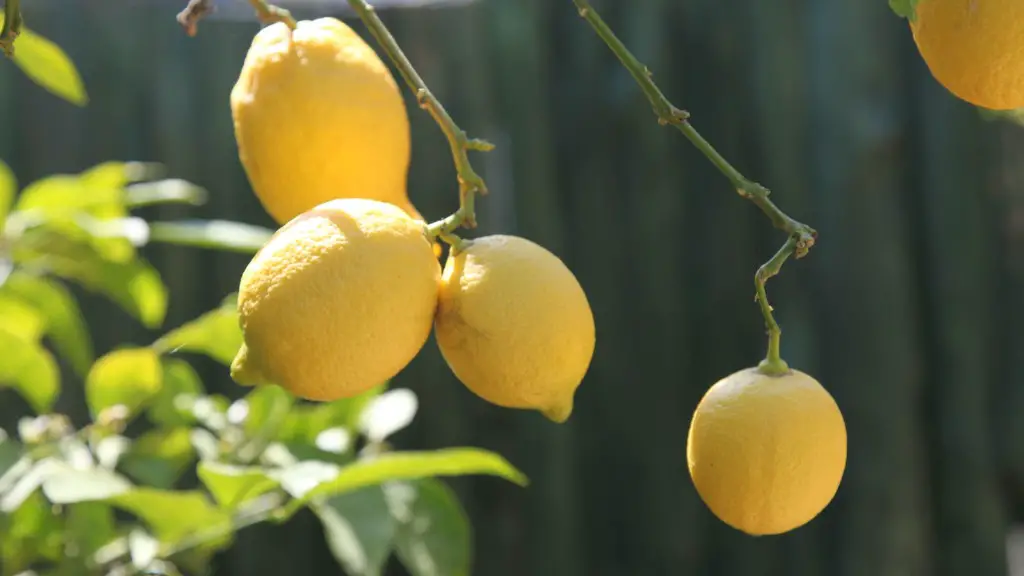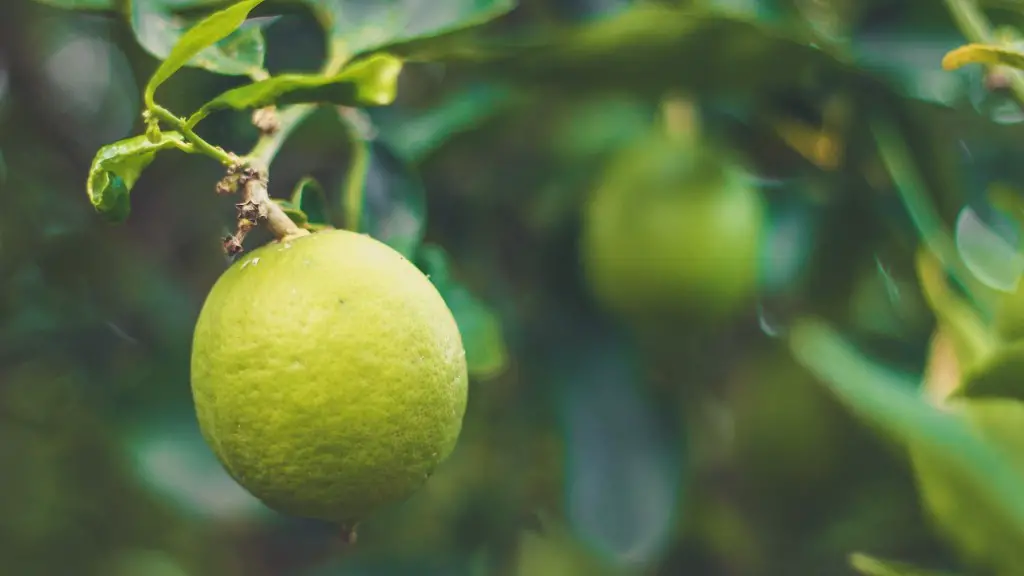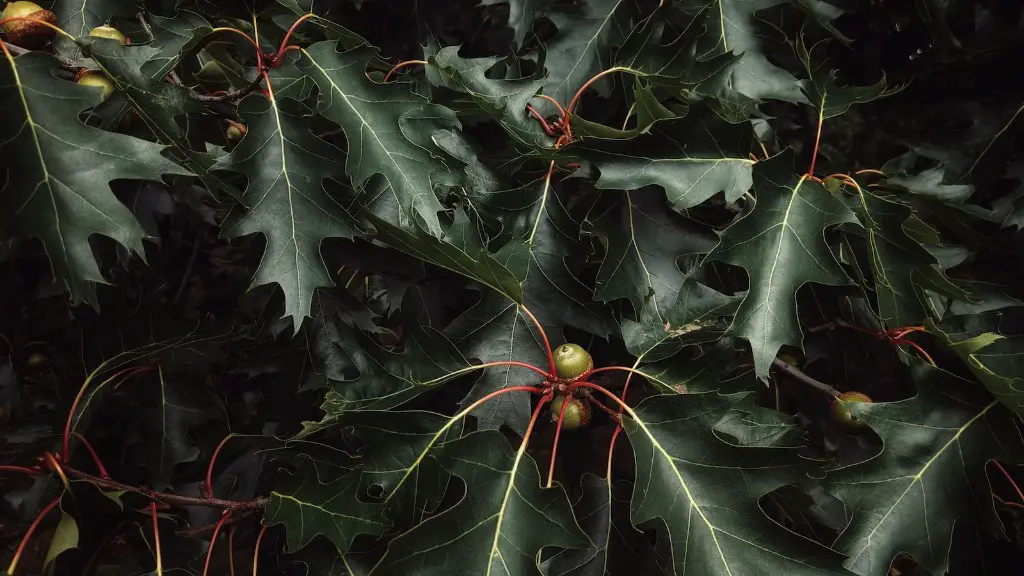When it comes to citrus trees, most gardeners, farmers, and home cooks are all too familiar with the struggle of determining if a lemon tree is alive or dead. Fortunately, there are some simple tests and indicators to help you identify if your lemon tree is dead. Active monitoring of the tree itself can offer the best information, alongside understanding forms of disease or pest infestations that can cause a larger problem.
Firstly, check the tree for physical symptoms. Many who have experienced dead lemon trees know that the leaves can be the first to show a difference. Leaves may change in color, become spotted or mottled, wilt, or curl up and go brittle and dry. The dying of leaves can also be a sign that sap has stopped flowing and the tree is drying out. If you take the time to disturb the bark on the tree, you will be able to find areas in which the sap has stopped flowing.
Next, inspect the soil around the tree. The health of the root system is often the least thought of indicator, but it can be quite telling. If you have access to an auger or a shovel, then you can take the time to try and dig around the root systems of the lemon tree and check for root necrosis or root rot. The visual inspection of the root system can provide a great deal of information about the health of the tree.
Inspecting your lemon tree for pests or disease will also provide key evidence. Creatures like snails, aphids, and even some fungi can lead to considerable damage to the tree, leading to death and destruction. Bringing in an arborist can often be the best way to find an infestation or disease, as there may be a larger issue that needs addressing.
Look out for any other signs of distress, such as an inability to take up water properly or a larger issue that is causing the tree to wilt. This could indicate that the tree has begun to struggle with uptake and transport of moisture in its bark and wood, which is absolutely vital to the health of the tree. Lack of water retention or uptake can often lead to death.
Lastly, check your tree for any type of root damage. The roots of a lemon tree are incredibly sensitive and can be very susceptible to any kind of root damage. Seeing if your lemon tree has any visible signs of root damage such as root rot or necrosis can be a huge sign that your tree is not healthy and needs attention. Taking the time to fix any root problems can often extend the life of the tree and lead to a productive season of growth for the tree.
What Causes Dying Trees?
Dying trees are often caused by improper care, over-watering or under-watering, and pests or diseases can all create the perfect environment for a weakened and dying tree. Planting in an improper location can also be the cause of poor health and potentially lead to the death of the tree. These factors can all make the health of the lemon tree worsen, promoting decay and stopping the vital flow of sap that leads to growth and survival.
Fertilizer can also play a critical role in the health of a lemon tree. Too little or too much fertilizer can cause the tree to die out, especially if the wrong kind of fertilizer is being used for the particular species of tree. Applying fertilizer too late in the season can also be detrimental to the health of the tree, as the nutrients may not be completely soaked up before the winter sets in.
Even simple things like air flow can be incredibly damaging to a lemon tree. If the tree is placed in a location where the air flow is blocked, for example near a building or other tree, this can lead to stunted growth and possible death in a lemon tree. Air flow is incredibly important for the health of a tree, as it encourages circulation of oxygen and other nutrients into the tree, promoting growth and vigor.
Lastly, poor pruning technique can also impact the growth and health of your lemon tree. Pruning too heavily can have drastic consequences, leading to weakening of the structure and allowing disease to enter the tree and gain a foothold. This can lead to the death of the tree over time, as the weakened state can prevent the tree from taking up sufficient amounts of moisture and nutrients.
Diseases and Pests
Disease and pests are a significant threat to the health of any lemon tree. Common diseases that can threaten lemon trees include root rot, fungus, blight, mildew, and other issues that can weaken the underlying structure of the tree. It is vital to identify any potential issues early and take the necessary steps to address them early on in order to minimize the potential for damage and prolonged suffering of the tree.
In terms of pests, aphids, snails, moths, and other creatures can threaten the health of the tree. It is important to keep the area of the tree clear of any potential pests, as the presence of these creatures can lead to reduced sap flow and ultimately death of the tree. If any kind of pest is present, then it is important to address this issue before it gets out of hand and causes significant damage.
Another common issue that can threaten the health of a lemon tree is the presence of herbivores. This can include animals like deers, who may break and damage the bark of the tree via their browsing behaviors, or rabbits, which may damage the root systems of the tree with their digging behavior. Taking the necessary steps to protect the tree from large animals can be the difference between life and death of the lemon tree.
It is essential to take the time to perform regular inspections of your lemon tree in order to identify potential threats and address any issues that exist. Taking the time to practice good gardening and tree care, using the steps above, can lead to a healthy and productive tree. Should any of these issues arise, intervene with the necessary steps to correct and revive the tree.
Miscellaneous Factors
Besides pests, diseases, and improper care, there are many other factors that can lead to the death of a lemon tree. Freezing temperatures can be incredibly damaging to the tree and even one night of freezing temperatures can be enough to cause the death of the tree. It is important to ensure that your tree is suitable for your particular climate before planting it, as this will help ensure the survival of your lemon tree.
In addition to climate, soil type can also be a major factor in the health and longevity of the tree. Soil pH needs to be just right, with varying needs from root to crop depending on the type of tree you are growing. Fortunately, pH kits and soil kits are relatively cheap and easy to obtain, making this a relatively easy task.
Overall, there are many factors that can lead to the death of a lemon tree. Some are more obvious than others, but it is important to understand what can cause the death of the tree and intervene with the necessary steps to correct any issues early on and avoid significant damage.
How to Revive a Lemon Tree
If you have identified signs of a dead or dying lemon tree, then the next step is to determine whether or not you can revive the tree. In some cases, trees can be brought back to life with a combination of fertilizers, proper water and air flow, and appropriate pruning techniques. However, it may be too late if the tree has suffered from too much disease, pest infestation, or other damage.
The best first step to reviving a lemon tree is to remove all of the dead or decaying parts of the tree. Removing any dead areas will stop any potential fungal infection from spreading and in turn, help to revive the tree. Secondly, ensure that you are using the correct amount of water and fertilizer for the particular species of tree. Too little or too much of either can cause the death of the tree.
Thirdly, look at the air flow and soil pH around the tree. Making sure that these levels are correct can make a huge difference to the health of the tree, allowing it to take up moisture and nutrients at the right level. Lastly, take the time to check for pests, fungi, or other diseases as well as any root damage. Taking the time to address any of these issues early on can make the difference between life or death of the lemon tree.
Prevention
Taking the time to practice good tree care and gardening techniques is the best way to ensure that your lemon tree remains healthy and productive throughout the season. Taking the time to understand the particular needs of your species of tree is essential, as this will help you understand how much water and fertilizer is necessary for optimal growth. Regular inspections for any signs of pest, fungus, root damage, or other health warning signs can also prevent potential death.
Lastly, look for any signs of air flow or soil obstructions that may be impacting the health of the tree. Taking the time to clear away any obstructions or debris will ensure the tree receives the correct amount of air flow and nutrients. Following these steps will help you easily identify any potential issues with your lemon tree before they become a larger problem.





